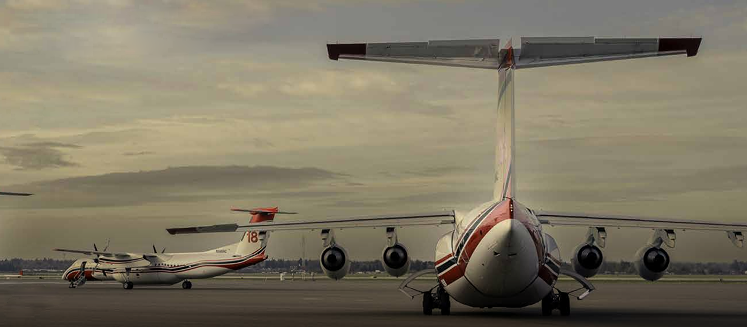Photographs and Text by Mark Edward Harris
There is a sense of peace on the quiet tarmac at sunrise in Chico, California, waiting to meet the crews of Aero-Flite’s fleet to learn more about their March aerial firefighting training program. Its a stark difference from the day in January when I photographed the company’s aircraft engaged in a pitched battle with the flames during the Palisades Fire, with seemingly relentless high winds fanning the inferno. The fire was eventually defeated from reaching its intended target, the heavily populated San Fernando Valley.
A low hum of activity carries through the hangar as mechanics start to prep the aircraft for this morning’s activities. All aircraft types in Aero-Flite’s fleet are here – the CL415, RJ85, and Dash 8-400AT, which the team calls the Q400. Five aircraft in total out of a fleet of 15, all gleaming white, much larger in person than anticipated. The company’s remaining 10 large airtankers and water scoopers are in the Spokane hangars receiving maintenance, or based in Texas, ready to respond, as the state faces high winter fire ratings.
Over 100 people are involved in executing today’s exercises, a mountain of logistics to coordinate for a program that runs for two weeks, everyday, to ensure all 65+ pilots receive flight training practice specific to aerial firefighting tactics ahead of the main fire season. Drops take place about an hour’s drive north of the airport on a 1500-acre property, which the team has set up to mimic a real fire, as close as they can to the real thing, complete with dozer lines, painted strips to mimic retardant drops, ground crews, and smoke machines. The ground crew adds recorded sounds of chain saws to their communications with the air crews to intensify the sense of reality.
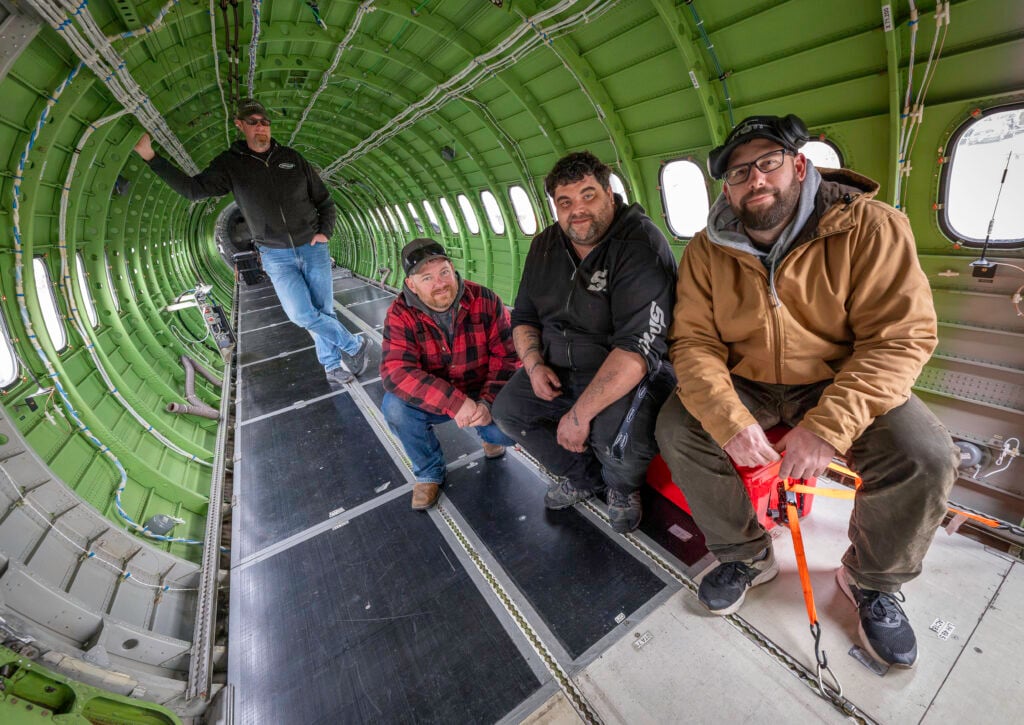
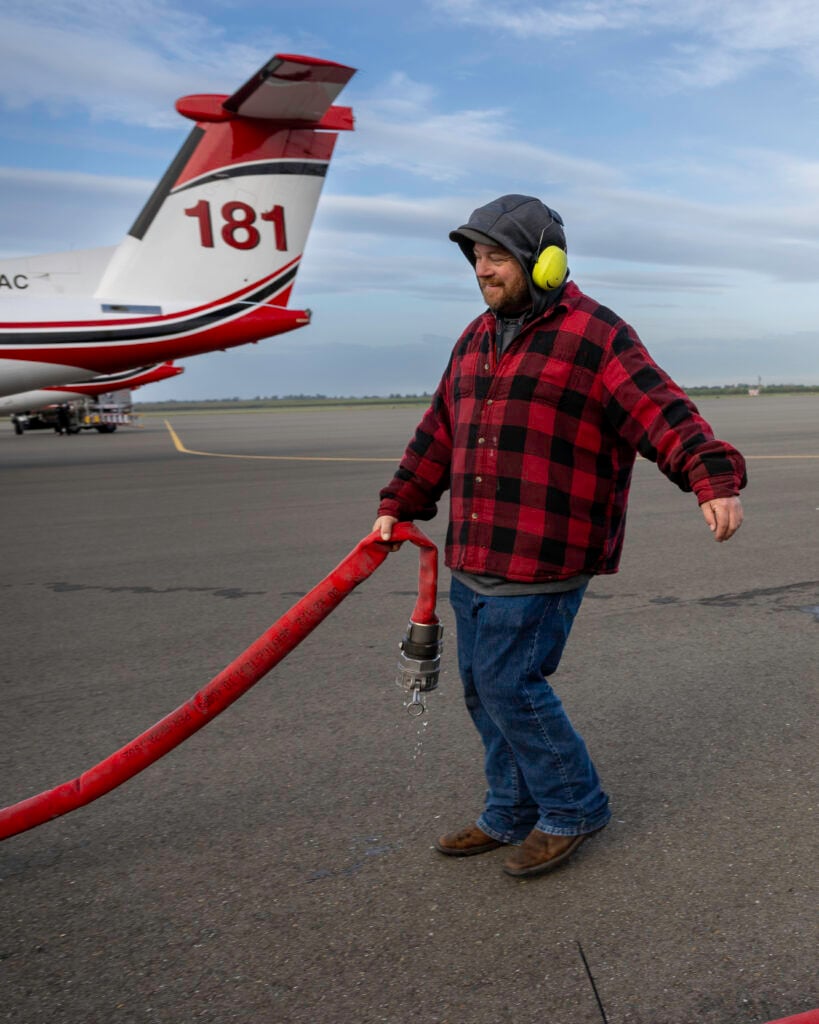
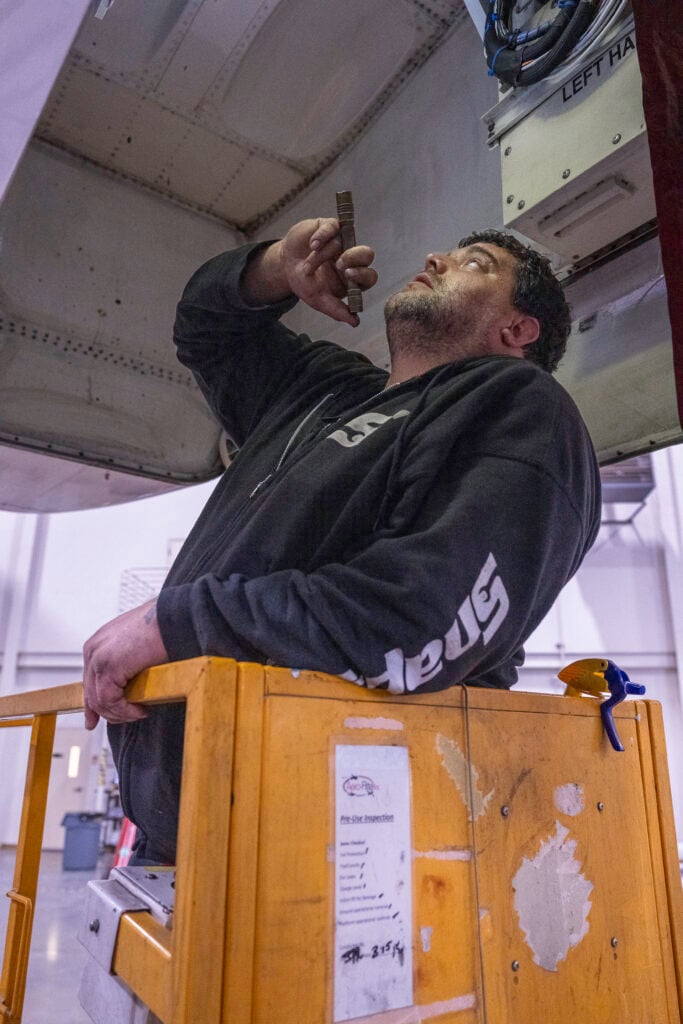
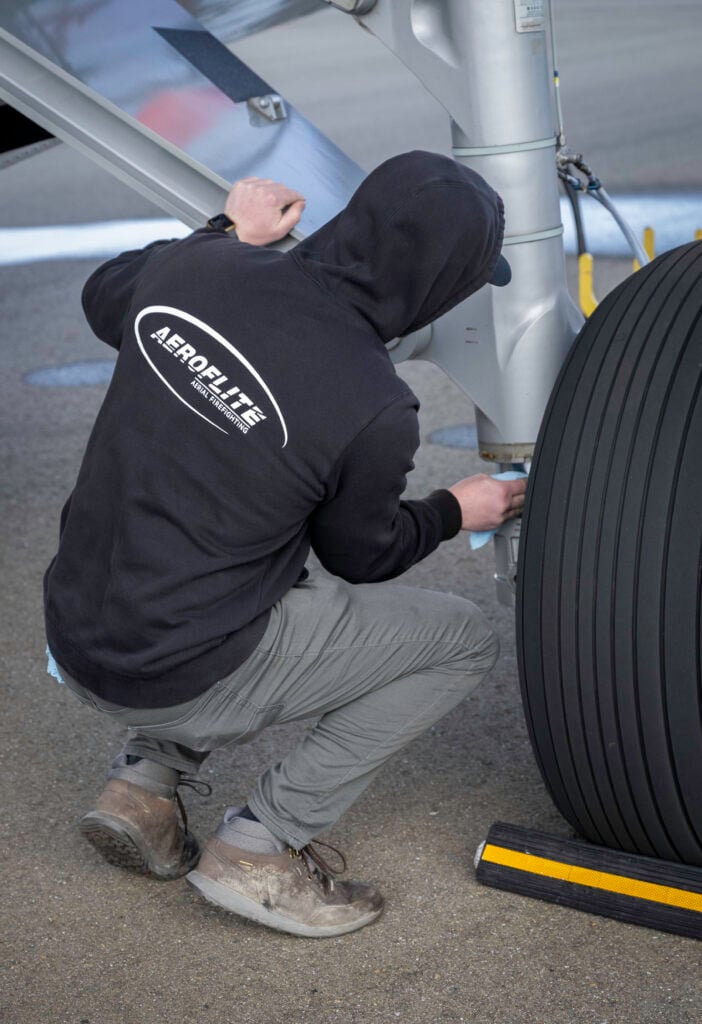
Brock Hindman, Aero-Flite’s Q400 Chief Pilot sets the stage, “There will be 25 Dash pilots training this year in Chico and that’s up eight from last year. To complete this training we are working with Anchor, Flank & Pinch to provide ground support in the practice areas. Additionally, Flight Safety International has completed the Recurrent and Initial Simulator training. The rest of the training is completed in house by our company instructors.” Members of the Aero-Flite pilot group live throughout the US, from Washington State to South Carolina.
After documenting the planes and ground crews on the tarmac, I head back in the hanger and upstairs to sit in on this morning’s pilot briefing, where pilots discuss, as they would in real life, the upcoming mission – the maneuvers that will be performed, tactics and strategy, taking into consideration a multitude of factors including wind, humidity, temperature, geography, vegetation, and fire behavior.
One of the pilots taking part in Aero-Flite’s spring training is Mike Downing. He served 22 years in the US army, traveling the world as a special operations Blackhawk pilot, ending his military career piloting the C-27J and Casa 212 in Yuma, Arizona at the Military Freefall School (MFFS). He joined the team at Aero-Flite last year as a Q400 First Officer. He explains to me his path to his current life, nature and structure-saving career. “Growing up in Oregon, I was always interested in wildland firefighting and saw the impact fires made on our communities. Retiring from army aviation, it seemed like a natural fit to go into aerial firefighting. Spring training last year for the Q400 team was a bit decentralized due to an early season callout in Texas. I was new to fire and had no idea what to expect.”
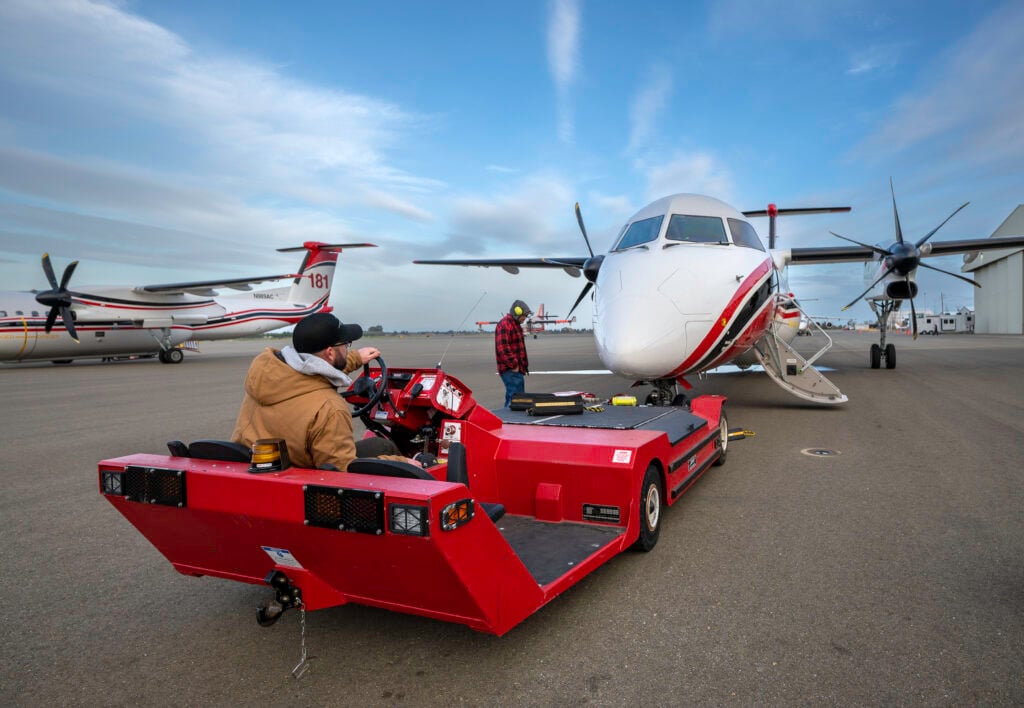
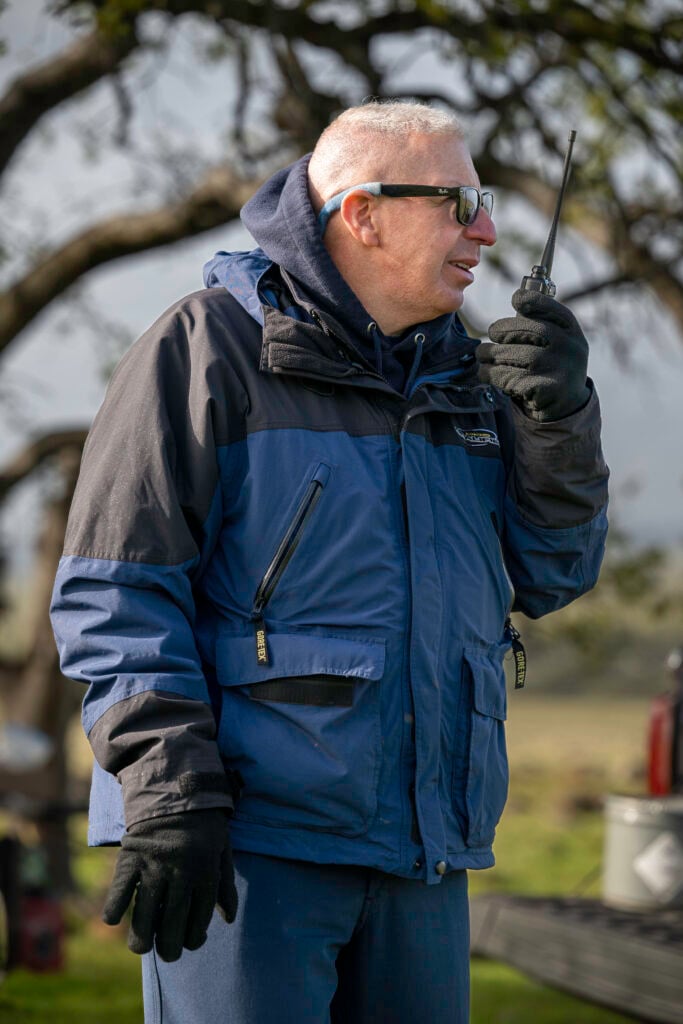
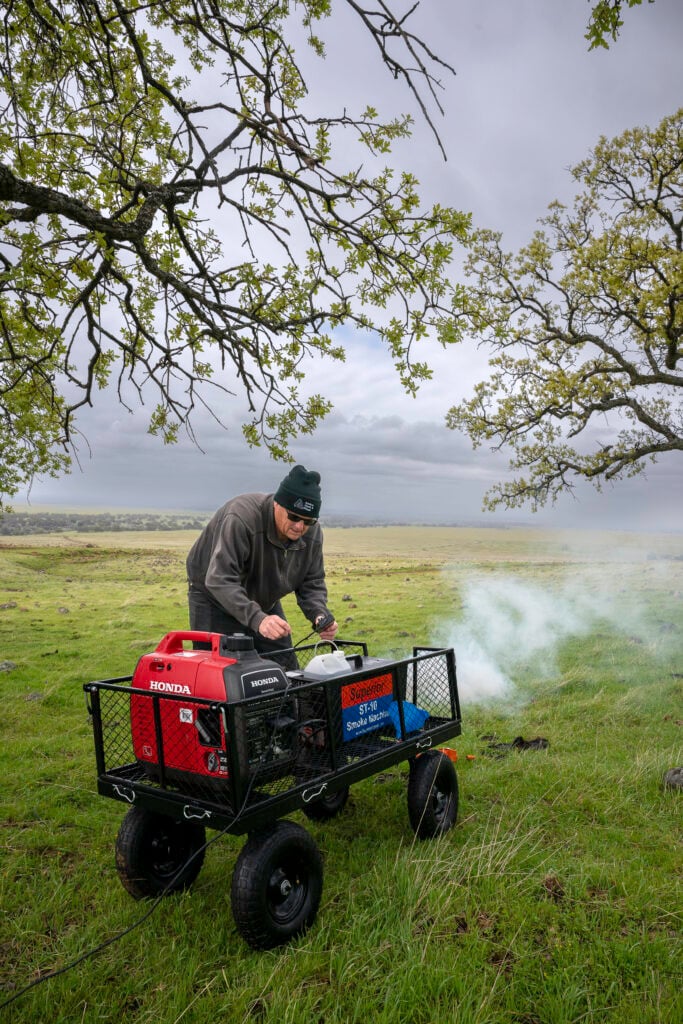
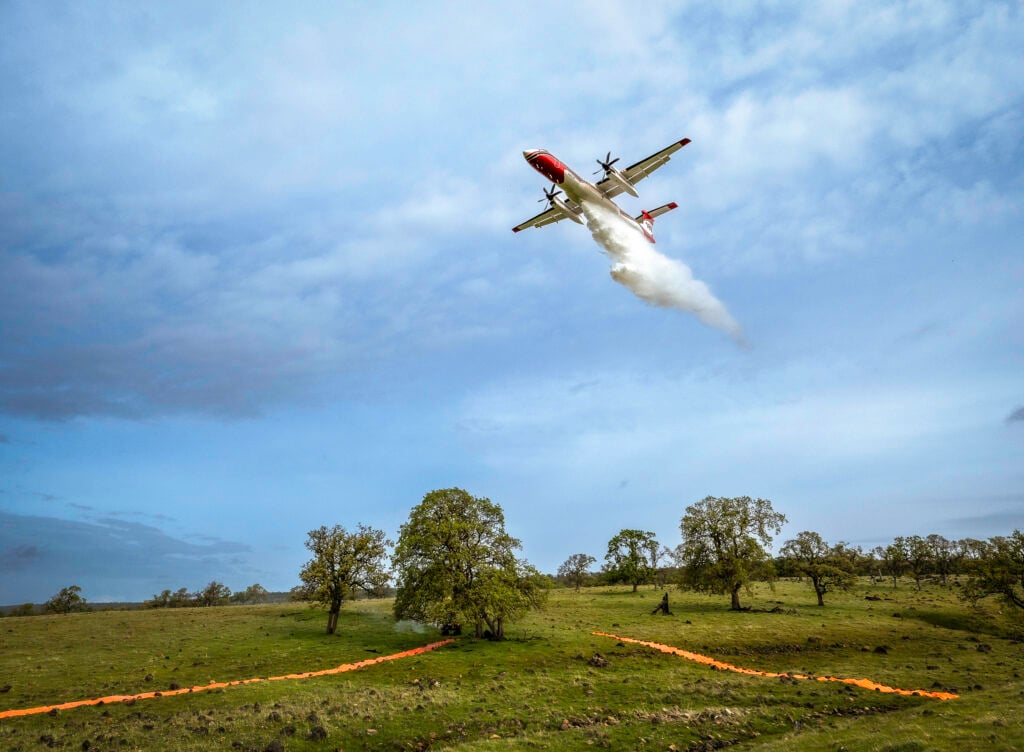
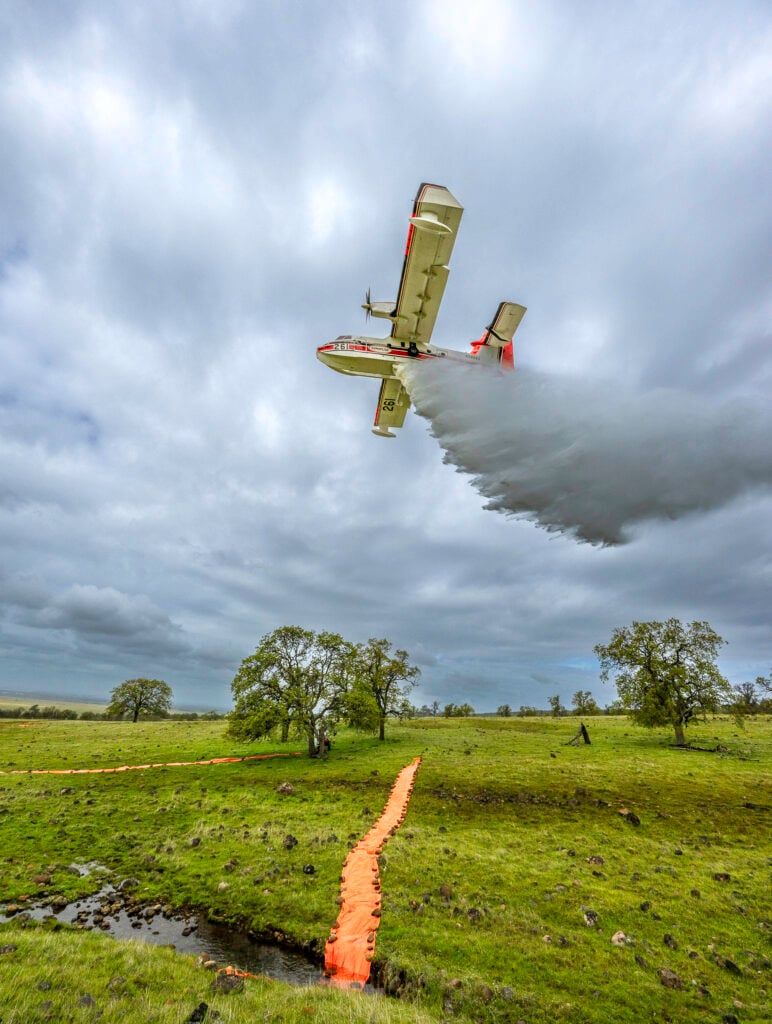
All pilots at Aero-Flite, new pilots as well as experienced aerial firefighters, undergo comprehensive training each year. This includes specific aircraft type training, familiarizing with standard aircraft features; ground school courses at the National Aerial Firefighting Academy (NAFA) as well as Aero-Flite, where the team learns about aerial firefighting communications, strategies, tactics, wildfire behavior, and human factors; simulator training; virtual reality training; and mission flight training to put theory and practice into action before wheels up on missions over real fires. The flight training has primarily taken place in Chico, California for the last four years, this year being its fifth year of operation.
Downing gives me a more comprehensive background. “Last year, after completing the NAFA program and the initial type rating course, I linked up with our assistant chief pilot in Spokane for company and fire academics. We proceeded to flight training sorties and live water drops covering standard tactics and emergency scenarios in a newly delivered Q400. Learning fire while learning a new aircraft is challenging, but going into the busy fire season the training never stopped, every dispatch a new tactical challenge. The mentorship and safety culture at Aero-Flite has been second to none and I’m grateful to be part of the team.”
Recurrent and Initial pilots complete four days in Chico for tactical flight training. The entire training event culminates with Pilot Carding at the end of the Chico session, which certifies the pilots can deploy to the field as Initial Attack flight crews to fight fire.
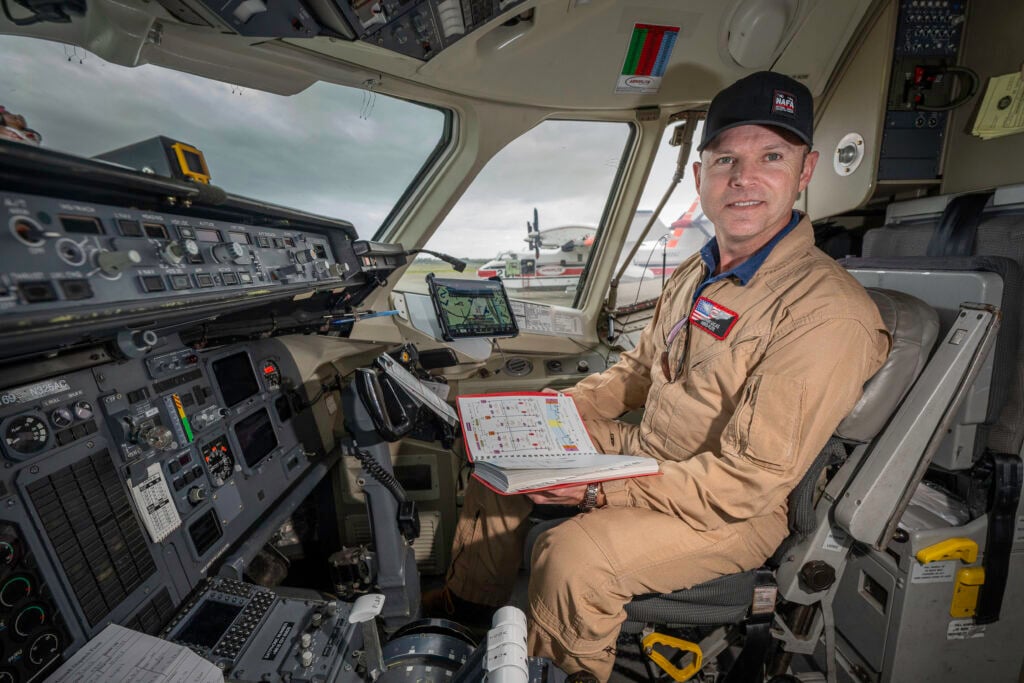
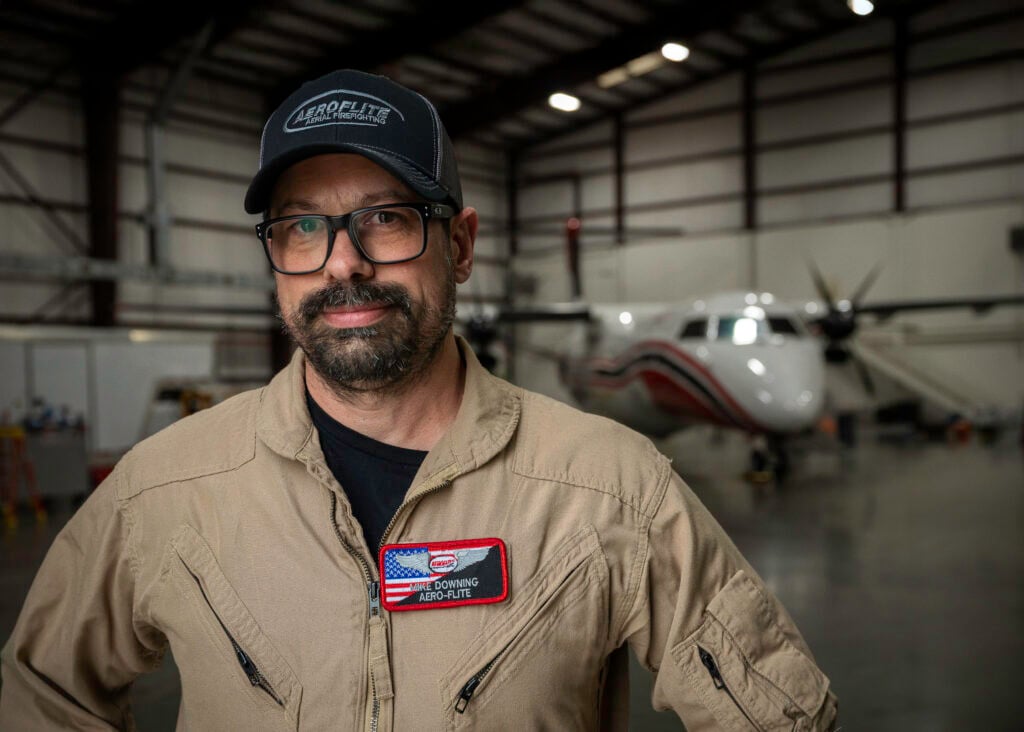
“Aero-Flite is an industry leader in training Initial Attack Captains, who are certified to drop on a fire without supervision. We have found that a structured and phased approach to training has reduced pilot upgrade timelines from years to months” explains Parker Lucas, RJ85 Chief Pilot, who has flown over 4000 fire missions in the last 15 years. Lucas is certified as an Initial Attack Captain, a Forest Service Airtanker Instructor (AKTP), and serves as an NAFA Industry Co-Chair.
Aero-Flite’s strong culture of safety has been nurtured over six decades of operation. The strength of their conviction to safe missions is equal to the depth of their desire to support firefighters and protect communities. The company is a pioneer in the US in aerial firefighting, strategically flexible and always focused on the mission at hand.
“I am fortunate to work with the team here at Aero-Flite” shares Chris Niemann, General Manager of Aero-Flite, as we travel to the drop zone after the pilot briefing. “Every single one of our group of over 250 employees is committed to making sure our response is fast and effective. We spend a lot of time and resources on training to ensure everyone comes home at the end of the day. Our pilot group that does our training in Chico are leaders in the industry, with nearly a dozen participating as NAFA instructors, educating pilots from across all organizations, not just our own. We strive to make the industry better, and our country safer.”
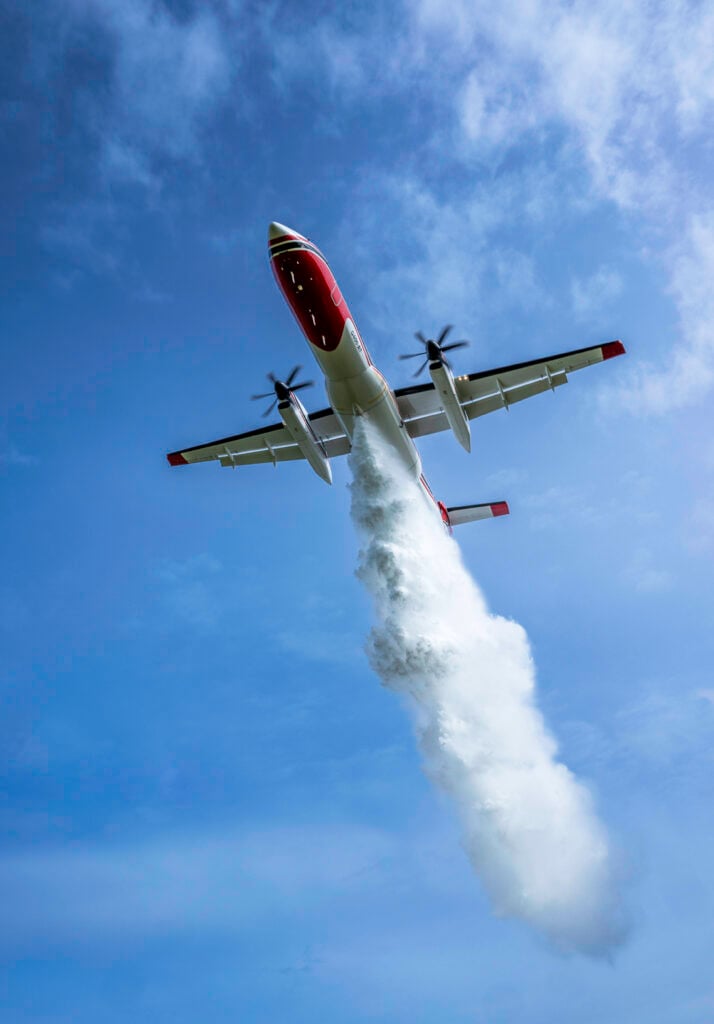
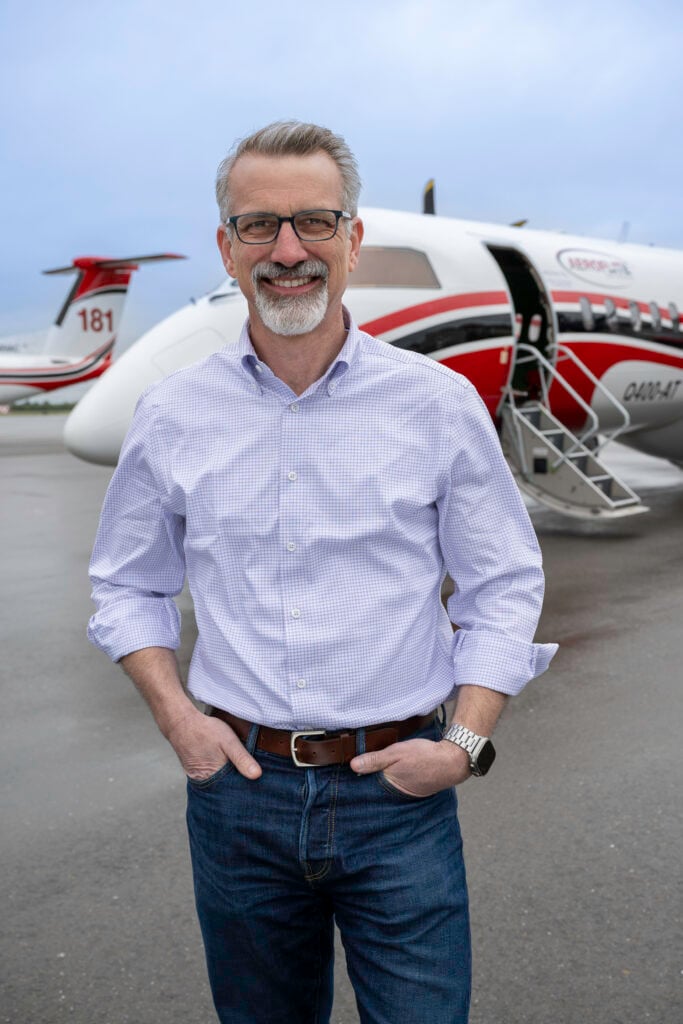
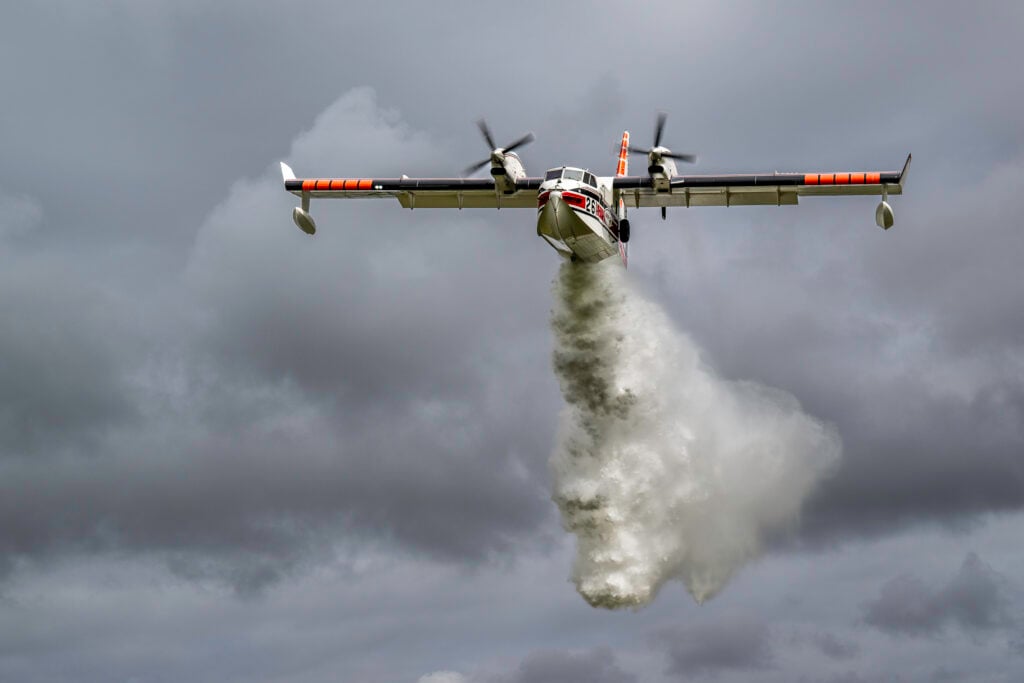
Aero-Flite has been challenged in the last handful of years, as has every provider in the country, with fires occurring all year, sometimes in locations new to wildfire. The company saw the pattern forming and predicted the future. In response they have grown their fleet of large aerial firefighters, this year adding two to the arsenal. And they expanded to include a second maintenance hangar, this one in Chico, in addition to the main Spokane Washington headquarters. All to be able to offer year-round response.
At the end of the day I have a chance to continue my conversation with Mike Downing. “Last season I worked fires in Washington, Oregon, California, Wyoming, Montana and Arizona. The end of my first year at Aero-Flite was deploying to SoCal in January to fight the Palisades Fire in Los Angeles.” It was incredible to be talking with a pilot who I had documented camera-in-hand in action over the City of Angels. I asked him what that experience was like from his vantage point. “It was a true test of the prior year’s training, operating a new aircraft on a complex urban fire with challenging hazards and terrain, all in some of our nation’s busiest airspace. Your heart just goes out to those people when you see the destruction. It felt good to have made a difference, even if only a small one.” From what I witnessed on terra firma, he and his team, as well as all those combating the fires, saved countless homes and lives.
###
Mark Harris is a freelance photographer and journalist based out of California. He can be reached at Website: MarkEdwardHarris.com or on Instagram: @MarkEdwardHarrisPhoto

